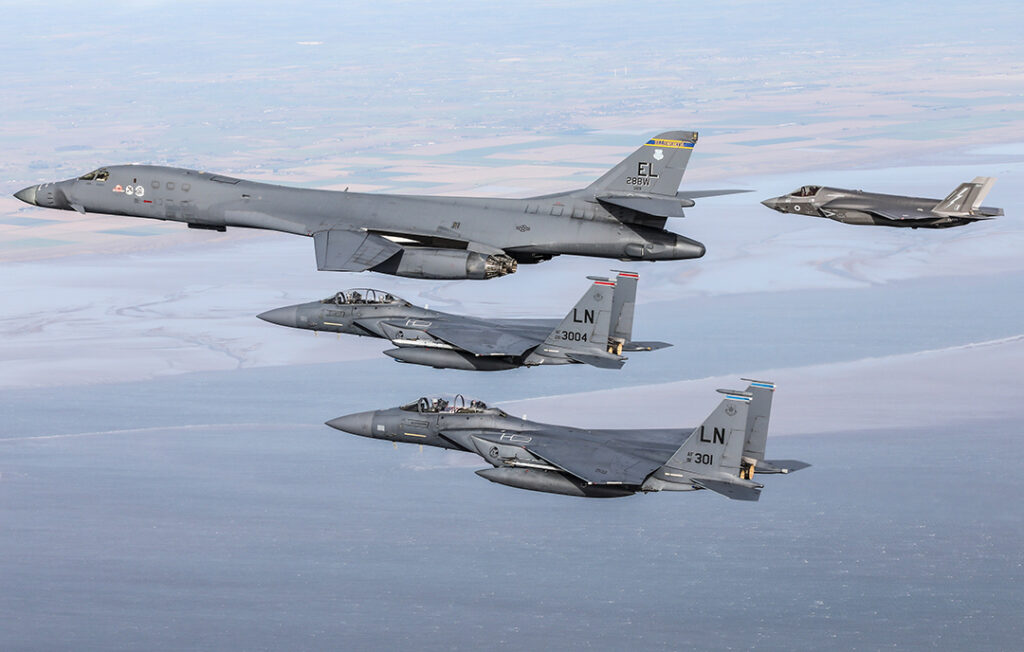U.S. Strategic Command
A United States Air Force B-1B Lancer bomber from Ellsworth Air Force Base, South Dakota, flew a round trip Bomber Task Force mission on February 1, 2022, from the frigid Midwest plains of the U.S. to the skies above the United Kingdom to commemorate the 80th anniversary of the U.S. 8th Air Force.
The B-1B strategic bomber was joined over Royal Air Force (RAF) Duxford by several RAF
F-35 combat aircraft and U.S. F-15 fighters from RAF Lakenheath, pictured, to recognize the anniversary. The event also underscored the special partnership between the U.S. and U.K.
“The 8th Air Force has a long, rich history that dates back to World War II,” said U.S. Air Force Maj. Gen. Andrew Gebara, commander of the 8th Air Force and Joint-Global Strike Operations Center. “Not only does this signify the longevity and reach of the United States’ bomber force, but it pays tribute to our U.K. allies as well. Eighth Air Force has had a close relationship with the Royal Air Force since its beginning.”
The F-35 and F-15 fighters along with the B-1B bomber conducted a flyover (called a flypast in the U.K.) of RAF Duxford. Duxford hosts Europe’s largest air museum and was home to the 8th Air Force’s P-51 fighter aircraft during World War II.
Due to its size and strength during World War II, the 8th Air Force earned the name “The Mighty 8th.” By mid-1944, the unit had more than 200,000 members. At its peak, the 8th Air Force could dispatch more than 1,000 four-engine bombers and a variety of fighter aircraft on a single mission.
Today, the 8th Air Force oversees B-1, B-2 and B-52 bombers, and E-4B command and control aircraft operations from its headquarters at Barksdale Air Force Base in Louisiana. The Air Force plans to roll out its newest capability — the B-21 Raider long-range strategic bomber — in the near future.
Bomber Task Force missions, such as this B-1B mission to the U.K., support the U.S. Department of Defense’s Dynamic Force Employment concept by deploying long-range strategic bombers around the world from bases in the U.S. for indefinite, scalable periods to enhance readiness, global security and stability, and demonstrate U.S. commitment to its allies.
“Our bombers can get after the mission anytime, anywhere,” said U.S. Air Force Gen. Jeffrey Harrigian, U.S. Air Forces in Europe-Air Forces Africa commander. The U.S. and U.K. continue to work together to bolster stability and security in the region and demonstrate NATO solidarity in Europe. “We will continue to work diligently with our NATO allies and partners to ensure that stability.”
IMAGE CREDIT: ROYAL AIR FORCE

